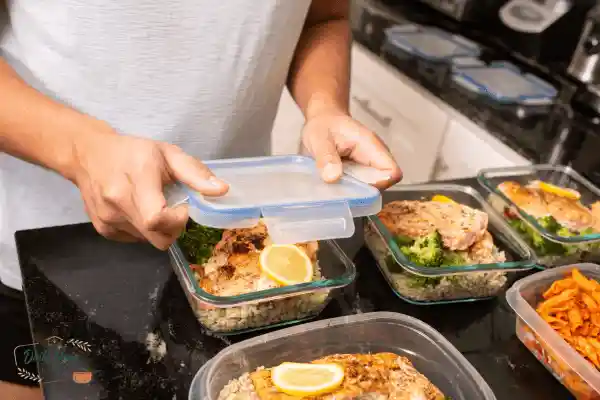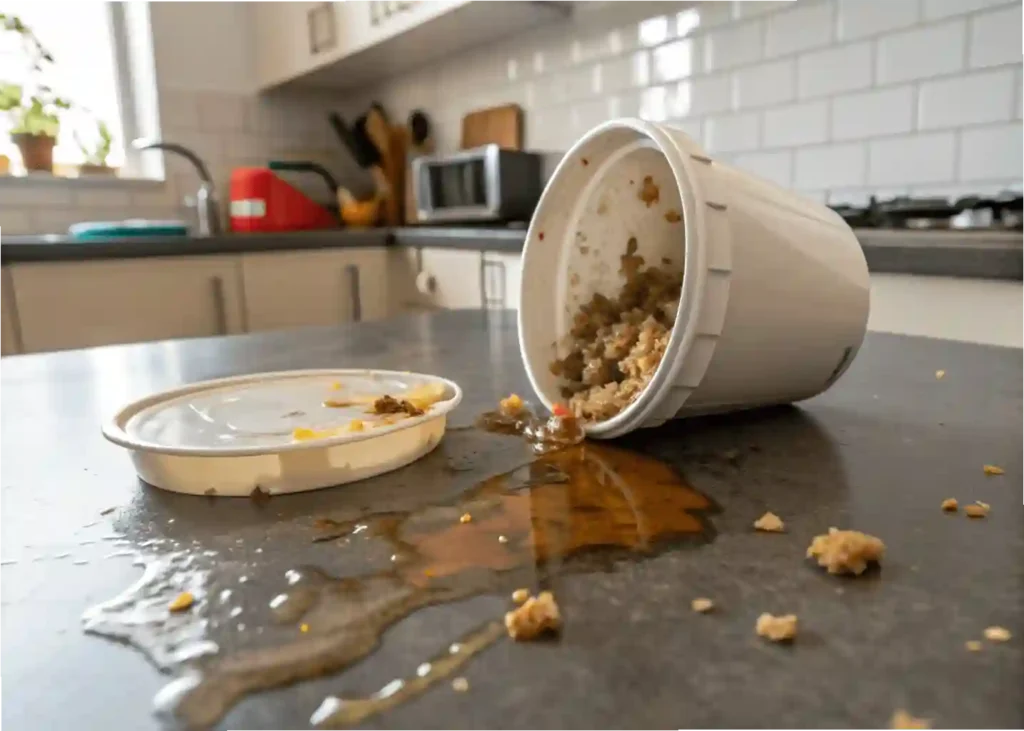Meal prep sounds so simple… until you’re standing in the kitchen on a Sunday night, surrounded by mismatched lids and containers that don’t quite seal. I can’t even count the number of times I’ve packed a salad, tossed it into my work bag, and then discovered it had “leaked” its dressing all over my planner. (Nothing like oil stains to remind you to double-check your lids.)
Here’s the part no one tells you: the containers you use can make or break the whole routine. If they’re too small, you’ll end up cramming food in. Too big, and your portions get weird. If they aren’t BPA-free or microwave-safe, you’re either stressing about chemicals or constantly washing extra dishes. Honestly, I used to think the food itself was the hard part, but nope it’s usually the gear.
So that’s what this piece is about. Not random Amazon best-sellers, not a Pinterest dream board, but actual meal-prep containers that busy women (read: people like you and me) can use without wanting to throw them out the window. I’ll walk you through why container quality matters, share three systems that actually hold up in daily life, and toss in some quick reheating tips so you’re not stuck with soggy or freezer-burned meals.
Because the truth? If your containers work, your meal prep sticks. If they don’t… well, you’re back to buying lunch by Wednesday.
Why Container Quality Affects Success
I used to think meal prep was all about the recipes. Spend Sunday cooking, portion it out, and you’re set for the week right? Except no one warns you how much the containers can mess it all up. One leaky lid in your purse and suddenly you’re eating sad takeout by Wednesday. Honestly, the wrong gear can kill your prep habit faster than forgetting to grocery shop.

The Hidden Cost of Cheap Containers
Those $10 sets at the dollar store look tempting. I’ve bought them. But here’s what happens: lids don’t quite click shut, they stain after one batch of chili, and if you microwave them? Half the time they warp or crack. You end up tossing them and buying new ones, which is kind of ironic when you thought you were “saving money.” And yeah if they’re not BPA-free, heating them can release stuff into your food that no one really wants to think about.

How Quality Builds Consistency
Now, when you have solid containers like ones that are genuinely leak-proof or those bento-style boxes it’s a different story. Suddenly meal prep isn’t this gamble. You trust that what you pack on Sunday will still be fresh on Thursday. Glass containers especially are game-changers: no lingering curry smell, no weird plastic bend in the microwave. They’re heavy, sure, but I’d rather carry a little extra weight than risk a soup explosion in my work bag.
Think of it like running shoes. Cheap ones will do for a while, but the blisters eventually make you stop. Good containers are like good shoes they don’t make you love the task, but they make it way easier to stick with.
FAQ: Are glass containers really better than plastic?
Honestly? For a lot of people, yes. Glass is safe in the microwave and freezer, and it doesn’t hold onto smells. But it’s heavy, and carrying three glass boxes in a tote bag isn’t exactly fun. BPA-free plastic is lighter, easier for on-the-go, and fine if you stick to microwave-safe versions. The “better” option depends on whether you’re more worried about weight in your bag or durability in your kitchen.
Top 3 Lunchbox Systems (with links)
There are thousands of containers out there, but only a few setups actually make life easier. After too many cracked lids and soup leaks, I’ve narrowed it down to three systems that busy women can actually rely on. Each one fits a slightly different routine, so think of this less like a ranking and more like “pick your lifestyle match.”
Bento-Style Boxes (great for variety lovers)
If you like to pack a little bit of everything say, chicken, roasted veggies, and a small snack the bento box is your best friend. The compartments keep things from touching (no soggy apples next to your salad), and they’re usually slim enough to slide into a work bag. Look for BPA-free ones with a tight silicone seal. A good option: Bentgo Fresh Box
Reheating Tips (Microwave & Freezer Safe)
Here’s the part nobody talks about: meal prep is easy on Sunday, but by Thursday, reheating can turn your food into a sad mess if you don’t know the tricks. I’ve had soggy broccoli, rice bricks straight from the freezer, and once a plastic lid actually melted onto my pasta. Lesson learned the way you reheat matters almost as much as how you cook.
Microwave Do’s & Don’ts
Quick rule: lids and microwaves don’t get along. If you heat with the lid sealed, steam builds up and either warps it or blows it halfway across the kitchen. Leave lids off or crack them open. Glass containers handle the heat better, while plastic needs to be marked microwave-safe or it’ll smell weird forever (and sometimes bend out of shape). Oh, and sauces? They splatter. Cover loosely with a paper towel unless you enjoy scrubbing tomato stains.
Freezer Prep Hacks That Save Time
Freezing meals is great until you try to thaw a giant frozen block of stew at 7 a.m. The fix: freeze single portions instead of cramming everything into one big container. Leave a little space at the top because food expands when frozen otherwise, you’ll hear the crack of a split lid. Label everything, too. I once pulled out what I thought was soup, only to discover it was applesauce. Not fun at lunch.
Grains like rice or quinoa? Toss in a tiny drizzle of oil before freezing. It keeps them from turning into one solid clump you have to stab with a fork.
FAQ: Can you microwave a container straight from the freezer?
Technically you can, but it’s risky. Glass hates sudden temperature changes, and plastic can warp. Better to move it to the fridge overnight if you can. If you forget (and let’s be honest, we all forget), use the microwave’s defrost setting instead of blasting it on full power. It takes longer, but at least your container survives.
What Size Is Ideal for Dinner Prep?
This is the part that trips people up way more than they expect. Too small a container and you’re cramming food in like luggage before a trip. Too big and you end up with weird portions that feel more like two meals in one. I’ve done both and neither makes meal prep any easier.
For a normal single dinner, something in the 25–32 ounce range usually feels right. Big enough for chicken, veggies, and some rice without everything mashing into one pile. If you’re packing lighter meals (like a salad or smaller portions), 16–20 ounces does the trick. Families or bulk-preppers? You’ll want bigger 64-ounce freezer-friendly ones so you can cook once and dish out later.
How to Think About Portions
- Work dinners you carry in a bag: around 25 oz. Big enough, but not a brick.
- Heavier meals (think gym fuel): closer to 30–32 oz. Room for more carbs and protein.
- Kids or snack packs: 16 oz is plenty.
- Family meals: go large 64 oz or casserole-size.
FAQ: Should I just buy one size or mix it up?
From experience? A mix. If you buy only one size, you’ll constantly be annoyed. Small snacks look ridiculous in giant boxes, and soups overflow in the little ones. Two sizes (one dinner-size, one smaller) cover almost everything without taking over your cabinets.
Conclusion
Here’s the bottom line: the right meal-prep containers aren’t just about storage they’re what keep the whole routine from falling apart by Wednesday. If your lids leak or your portions feel off, meal prep quickly turns into more hassle than it’s worth. But with a few solid bento boxes, some reliable glass for soups, and freezer-safe stackables, suddenly the habit feels… doable.
I won’t pretend containers magically solve everything you still have to cook, after all but they take away those tiny frustrations that make people quit. And honestly, when the gear works, it feels like one less thing to fight with during the week.
So maybe this weekend, instead of grabbing another random plastic set, pick one system that actually fits your lifestyle. Next week’s you the tired, hungry, slightly stressed version will be really glad you did.


Leave a Reply